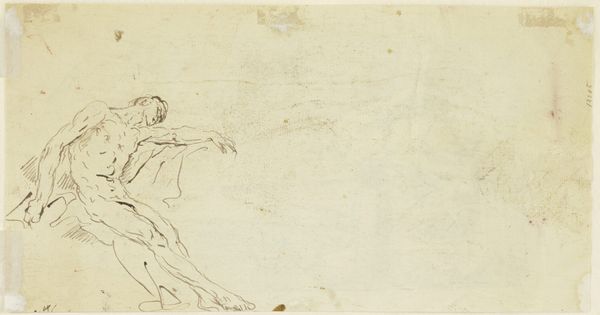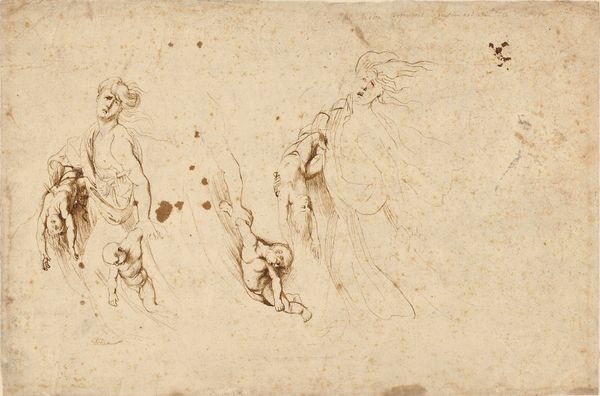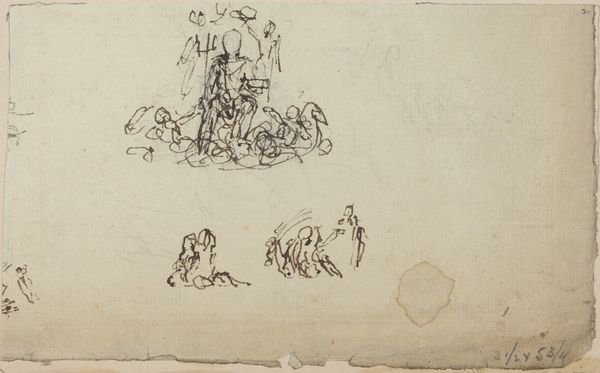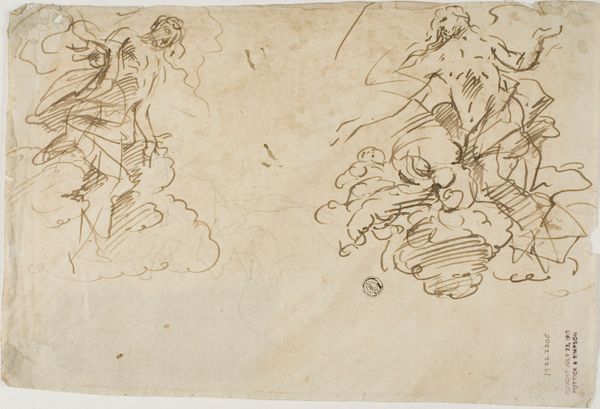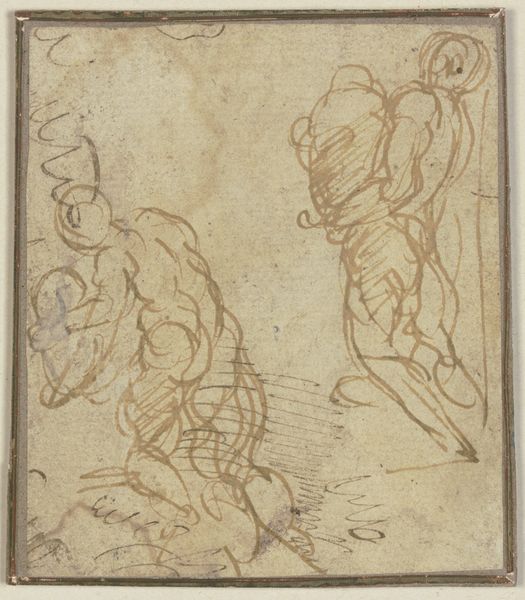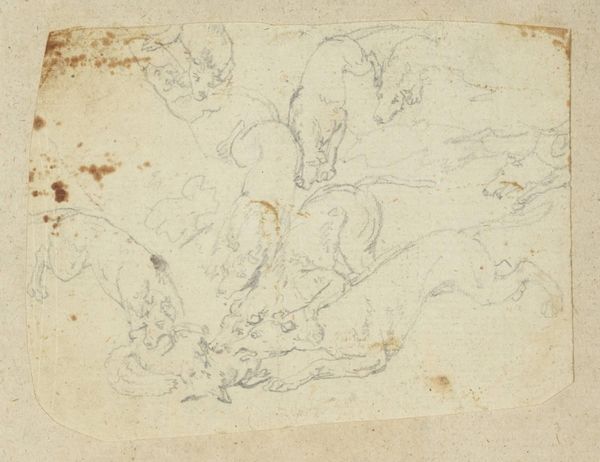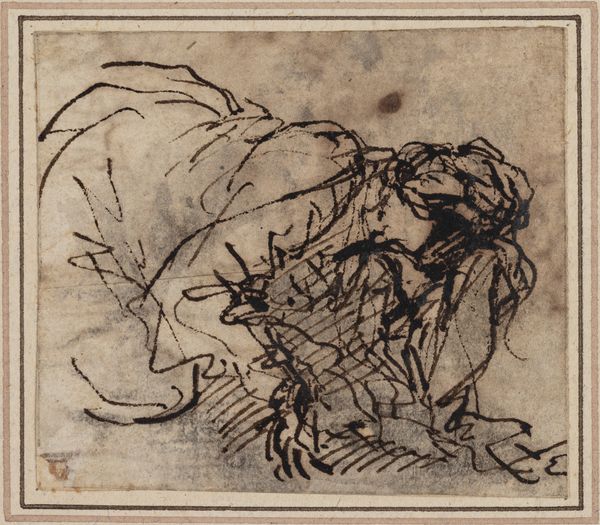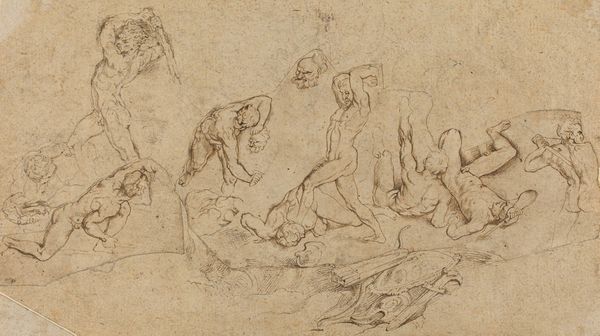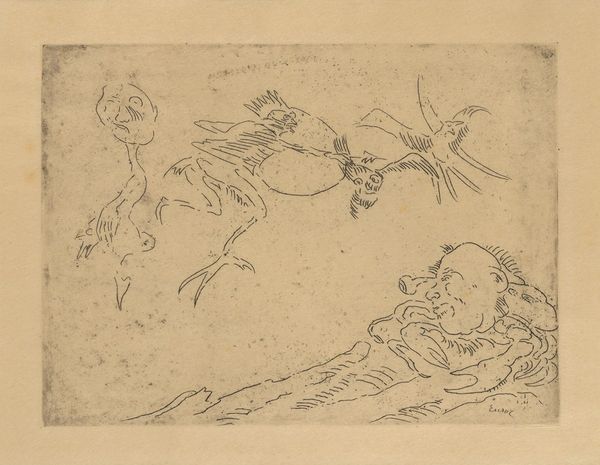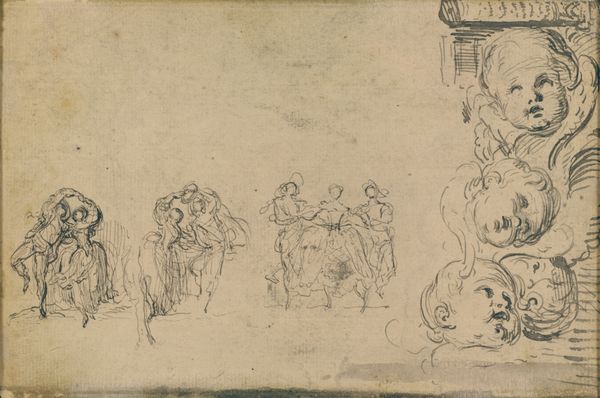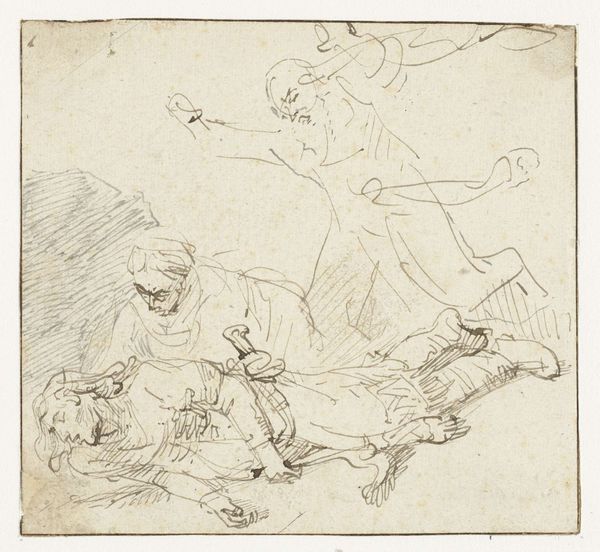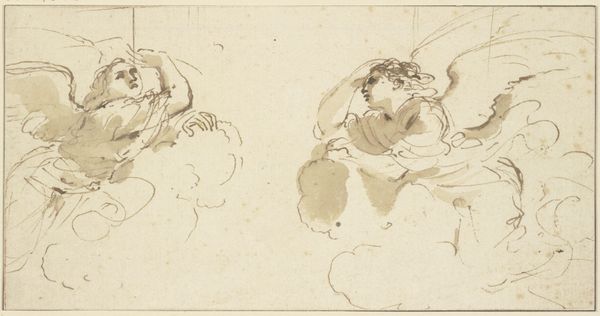![Studies of Figures for an Adoration of the Magi [verso] by Donato Creti](/_next/image?url=https%3A%2F%2Fd2w8kbdekdi1gv.cloudfront.net%2FeyJidWNrZXQiOiAiYXJ0ZXJhLWltYWdlcy1idWNrZXQiLCAia2V5IjogImFydHdvcmtzL2Q5ODZjOGYwLThhZmUtNDU3Yi1hNTQyLWQ3NjVhNzU3ZjcxMC9kOTg2YzhmMC04YWZlLTQ1N2ItYTU0Mi1kNzY1YTc1N2Y3MTBfZnVsbC5qcGciLCAiZWRpdHMiOiB7InJlc2l6ZSI6IHsid2lkdGgiOiAxOTIwLCAiaGVpZ2h0IjogMTkyMCwgImZpdCI6ICJpbnNpZGUifX19&w=3840&q=75)
drawing, paper, ink
#
drawing
#
figuration
#
paper
#
11_renaissance
#
ink
#
history-painting
#
academic-art
Dimensions: overall: 17.8 x 27.8 cm (7 x 10 15/16 in.)
Copyright: National Gallery of Art: CC0 1.0
Curator: Immediately, I'm struck by the vulnerability in these figures, their poses speak to a moment of exposure, literally and perhaps figuratively. Editor: Indeed. We’re looking at a pen and ink drawing on paper by Donato Creti, titled “Studies of Figures for an Adoration of the Magi [verso].” It’s likely a preparatory study for a larger history painting. The sketch-like quality allows for a fascinating glimpse into the artist’s process. Curator: Right, it’s interesting to see the artist working through these figures; the lines have a very flowing and spontaneous feeling. Look how certain lines are reinforced, especially defining musculature. There's almost a pentimento effect to the composition, creating depth through repetition. It lends the figures this ghostly, searching presence. Editor: Yes, and knowing it's a "verso," or reverse side of another work, adds a layer. It begs the question of what narrative is driving the postures we're witnessing here, figures caught in expressions of humility and presentation within a religious historical narrative. Are we, perhaps, complicit as viewers, privy to a candid perspective on devotion and service? Curator: Precisely! The symbolism in the adoration scene has roots stretching back centuries; in representing submission to something greater than the self. One can imagine Creti referencing earlier depictions of the Magi while reimagining them for his particular cultural context. Editor: The academic style also suggests that Creti was influenced by institutions like the Academy of Fine Arts of Bologna. Understanding the networks and political dimensions behind academic art highlights how even religious imagery carried particular classist associations during the Renaissance and thereafter. These conventions can simultaneously signal authority while restricting certain depictions. How were people of color and the poor portrayed in comparable works? Curator: That's an insightful challenge! If one contrasts Creti's image alongside the works of Peter Paul Rubens for example, you may see a certain idealized body type emerge here as almost an intended archetype to suggest a canonization of the physical and emotional labor. The figures embody the ideal as both spiritual and physical exemplars, in that sense. Editor: Viewing them today prompts reflection: Who do we still expect to adopt these postures of service? And who benefits from these performative acts of supplication? Curator: Ultimately, this drawing encapsulates a long lineage of visual ideas, making it a complex and evocative experience. Editor: Yes, Creti’s sketches offer insight into art as both reverential practice and reflection of unequal historical relations of labor and power.
Comments
No comments
Be the first to comment and join the conversation on the ultimate creative platform.
